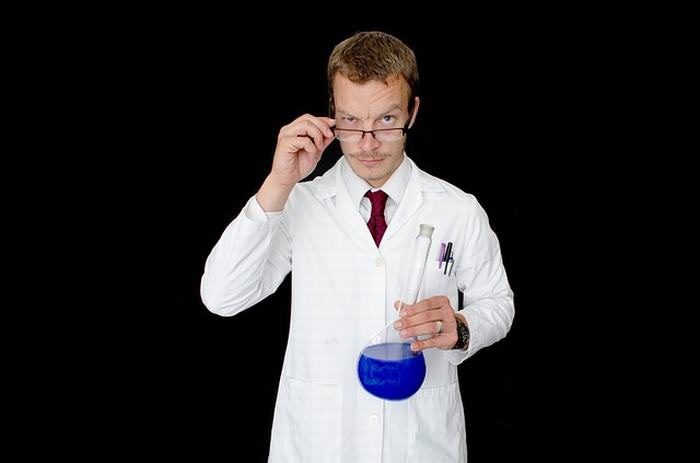
The world is full of mysteries, including our body, animals, and other things around us. Science has been solving many of these mysteries, however, it has still left many curiosities unanswered, such as why moths are attracted to light, why we age and where dogs came from. The following information might not satisfy your curiosity, but it might just make you ponder on them a little further!
One of the top asked questions about the human body is most definitely the phenomenon of hiccups. We have been told that hiccups are triggered due to a spasm in the diaphragm, which results in bothersome involuntary gulps we cannot control. There are several suggested hiccup cures we sometimes find ourselves trying, to desperately get rid of our hiccups' persistent annoyance, and these include eating a spoonful of sugar or holding your breath, amongst countless others.
Oddly enough, some of them actually do work, with the use of methods such as increasing the amount of carbon dioxide in the blood, getting a rectal massage, and stimulating the 'vagus nerve' by pressing the eyes or pulling the ears. Although some methods have been proven to work, no one really knows the reason why.
Clearly, bugs are attracted to light, especially moths. If you give this fact a bit of thought, you will realize how peculiar it really is. If light is not artificial, it is either coming from the sun or from a fire, two things that are logically unnatural to be attracted to them - so what in the nature of moths lends them such passionate interest in our lamps at night? According to scientific theories, this is in fact the only kind of light that attracts them. They suggest that there is something about artificial light that interferes with the insects' navigation abilities, and there might also be something in the light's frequencies that reminds them of the pheromones given off by potential mates. However, these are still merely suggestions.
Have you ever thought about the composition of foam? As science explains, foam is neither classified as a liquid, nor as a gas, and nor as a solid - but as the three of them at the same time. Presently, there's not enough evidence to give a clear explanation for its formation, however it has been suggested that most foams are made up of gas in between bits of liquid. Its behavior, on the other hand, remains an undiscovered mystery. What we know for sure is that we can distinguish between different types of foam - for instance, the foam that forms from your washing soap looks different from your shaving foam, the difference being in the stiffness. Other than that, we've got nothing apparently concrete we can learn from this weird, bubbly substance.
Static electricity is the strange sensation you feel when you're walking on a carpeted floor, or grabbing a metal doorknob, in dry conditions. Although science has discovered how this energy is built, there is no definite reason for the transfer of the electrical charge to or from an insulating material. What is baffling is that, by nature, an insulator shouldn't allow for this to happen. Even two objects made of the same material, rubbed together, can trigger the charge to happen, which is strange given that scientifically speaking, it is the difference between materials that causes the electrical charge to occur. Can anyone possibly find an understandable explanation for this?
We've always known dogs as being man's domestic companion, and rightly so, this has been going on for 9,000-34,000 years. Have you ever thought of how this actually came to be? Where did our dogs really come from? There is something particularly queer about the connection of today's dogs and the dogs from the beginning of their domestication - scientific research has found that the DNA of both kinds are not related. This surprisingly suggests that the "dogs" that were domesticated 33,000 years ago are not the same as today's dogs, but were a kind of 'sister species'. This leaves us with a great mystery in the history of dogs and their origin, which has some curious missing details we're unable to fill.
There's a whole bunch of theories behind our ability to perceive colors and how it is made possible. According to science, color happens when light enters our eyes and is processed by the brain. Like that, we can tell red from yellow and blue from green. What we fail to tell is whether the red I see is identical to the one you see. We know about colorblind people, who are incapable of perceiving colors because of their weak receptors, and 'tetrachromats', who on the contrary, can see more colors than a normal person can - and we know this because these conditions are extreme. However, we're also unsure about whether the rest of the people are seeing the same colors or not, and it would be very difficult to be able to show evidence to this.

In the world, something is generally either alive, or not. But apparently, this is not the case with viruses. Scientists have detected some oddities going on in the behavior of viruses - leading some to believe they're living organisms, due to the fact that they can spread and multiply, and others that they're not alive, because of their absence of metabolic functioning. However, more research proved that viruses can also reproduce, show hints of evolution, and are even able to carry out its processes outside a living host. This leaves us with numerous doubts and unanswered questions to viruses' state of being.

If only we knew the answer to this. Well, science has made an attempt at answering it, by providing actual biological evidence of what happens in our cells during this process. Basically, as we grow older, our muscles tend to lose mass, our tissues increase in rigidity and stiffness, and the new cells produced by our body lose their efficiency at absorbing nutrients and getting rid of waste. This may all be true, but it still doesn't tell us WHY it happens. So far, we've had various theories that have tried to find an answer to it, claiming that aging is a by-product of the body's waste materials, or that it's the result of external factors such as UV-rays, or even because it's in our genetics. The bad news is - none of these have been proven yet.
Another curiosity about aging is the fact that people age at different rates - what might be the explanation for that? Is it perhaps in our genes too? Whatever the answers may be, no one is anywhere close to knowing them.

Migraines are not infections, diseases or conditions. They are very often kinds of aches, which turn out to be stronger than headaches, and come with several other symptoms such as nausea, blurred vision, painful sensitivity to stimuli, vomiting, and in some cases even loss of consciousness. These symptoms vary from one person to another, and what they are triggered by is something many people still wonder about. Being exposed to changes in weather, certain smells or foods, or having undergone physical exertion, are said to be some of the most evident and possible causes. Some even say that the tendency of having migraines can be inherited through our genes, and that people who are more prone to getting them have certain parts in their brains that are more sensitive than others. However, there's no concrete proof for these assertions so far.

Allergies can be difficult to live with, but some people find that theirs have unexpectedly disappeared, while others find they're suddenly suffering from one they've never had. The way this happens is a curious case indeed. Although it is scientifically possible for this to happen, we are unsure of the reason behind it. Bizarrely enough, 20% of children who have a peanut allergy lose their sensitivity as they grow older, and 80% of children who have a milk allergy lose it too by the time they reach their teens. What's more, it has been observed that the children of the present have a much larger chance of outgrowing their allergies than the children of past generations. All these facts do nothing more than stump us even more about the mysteries of this world.
H/T: Listverse.com